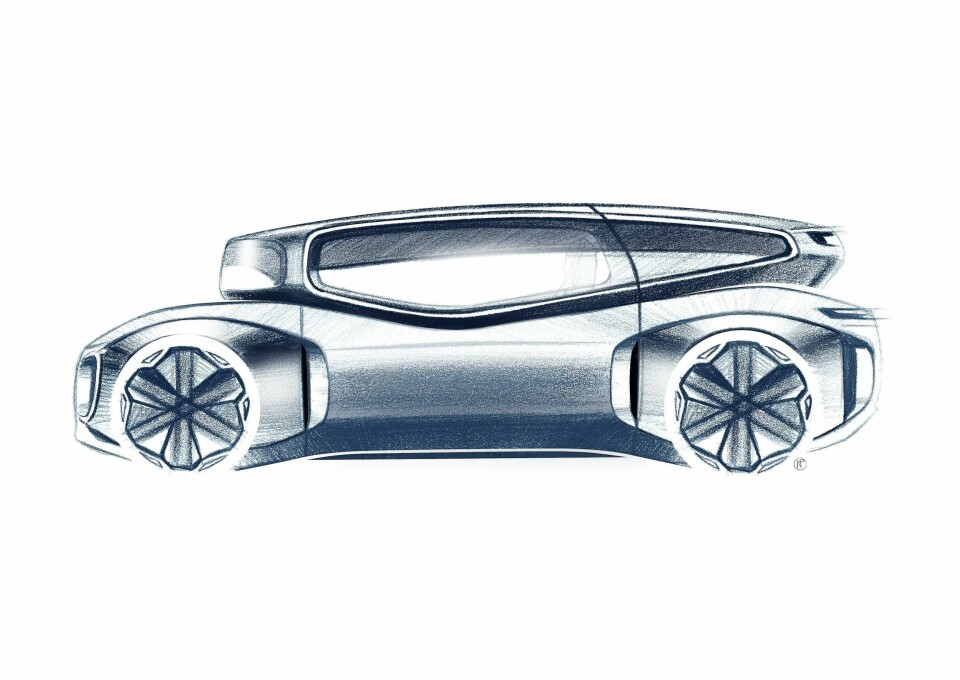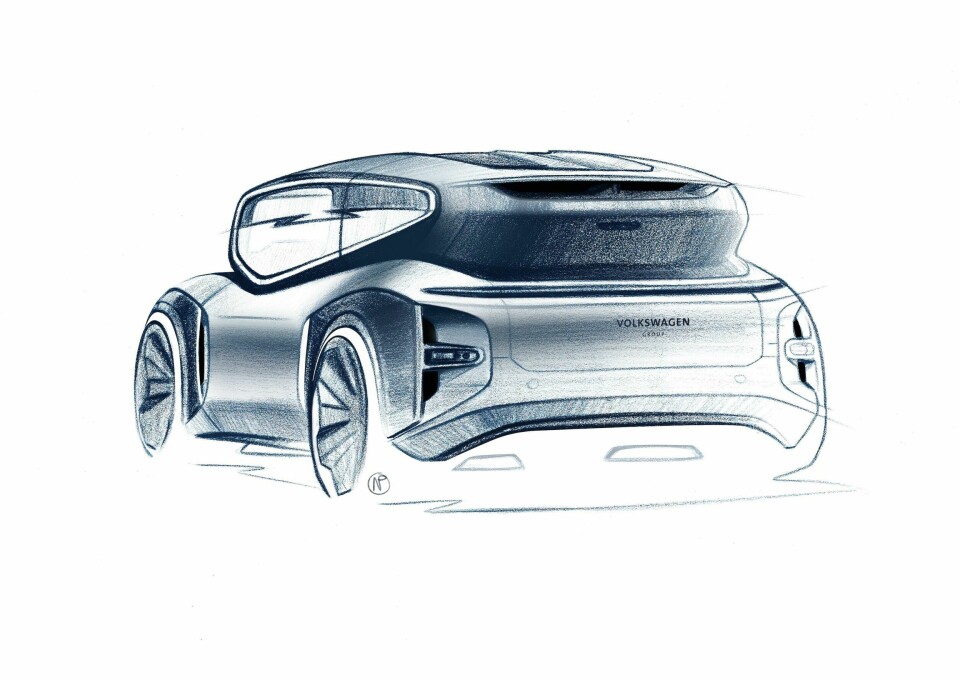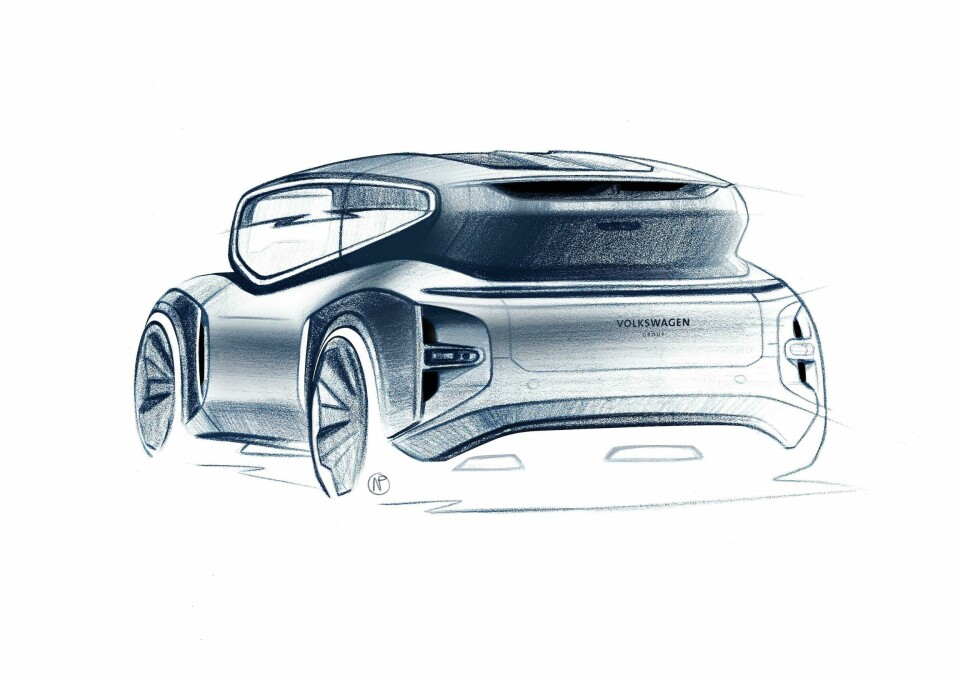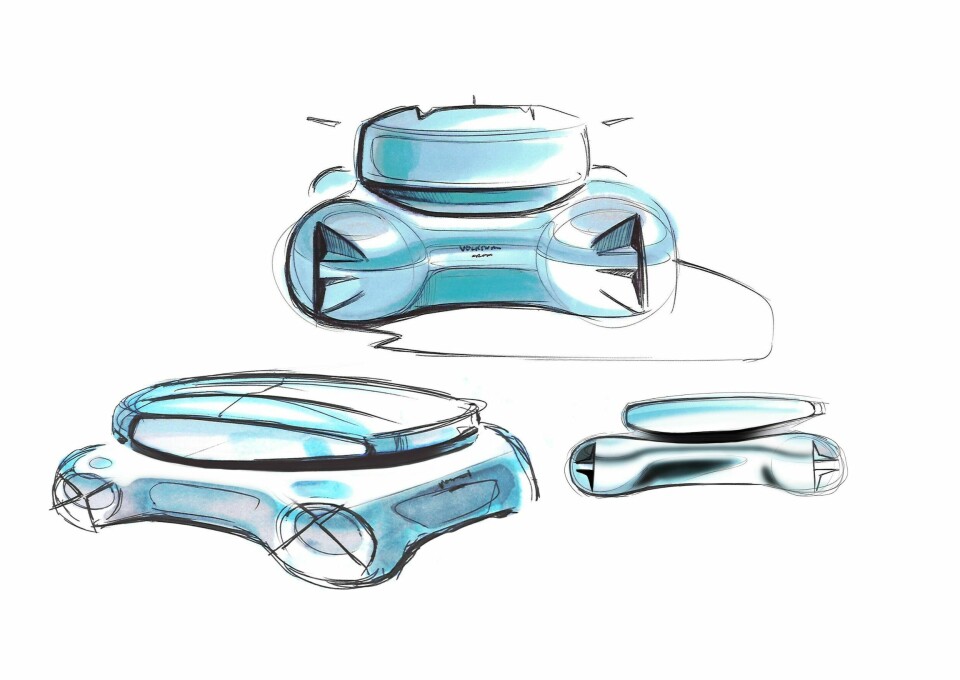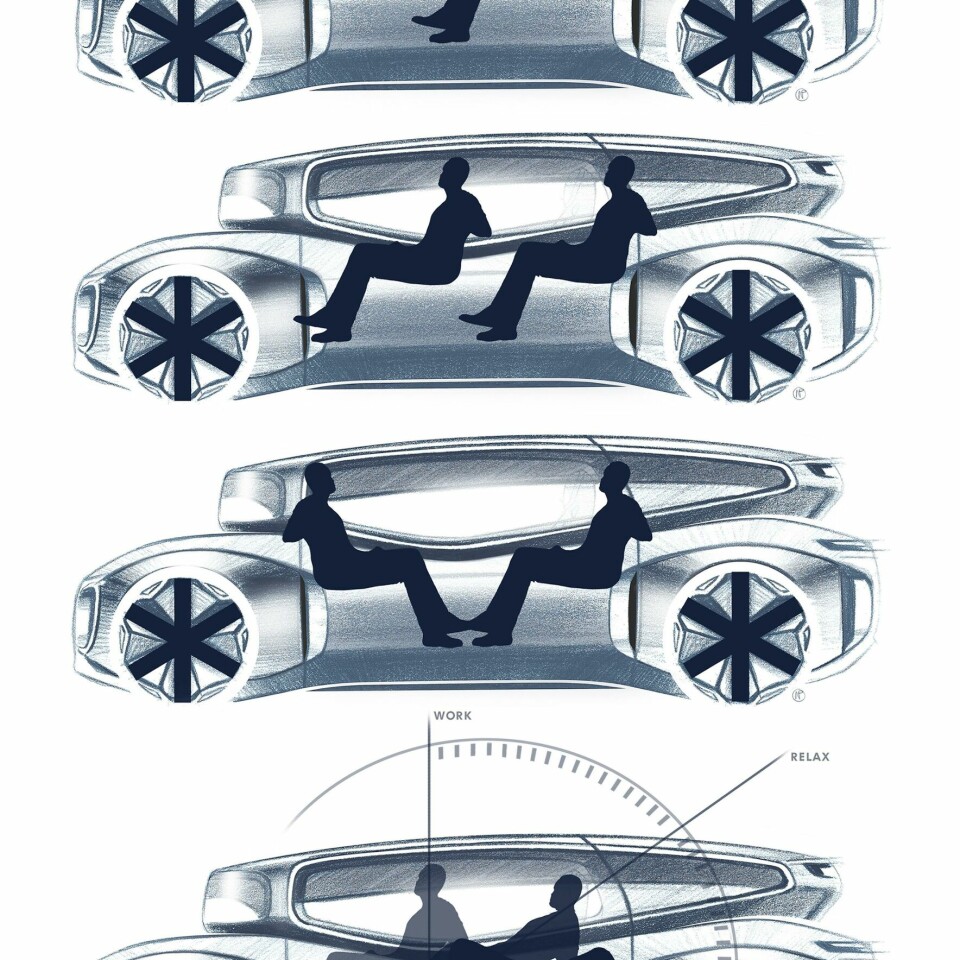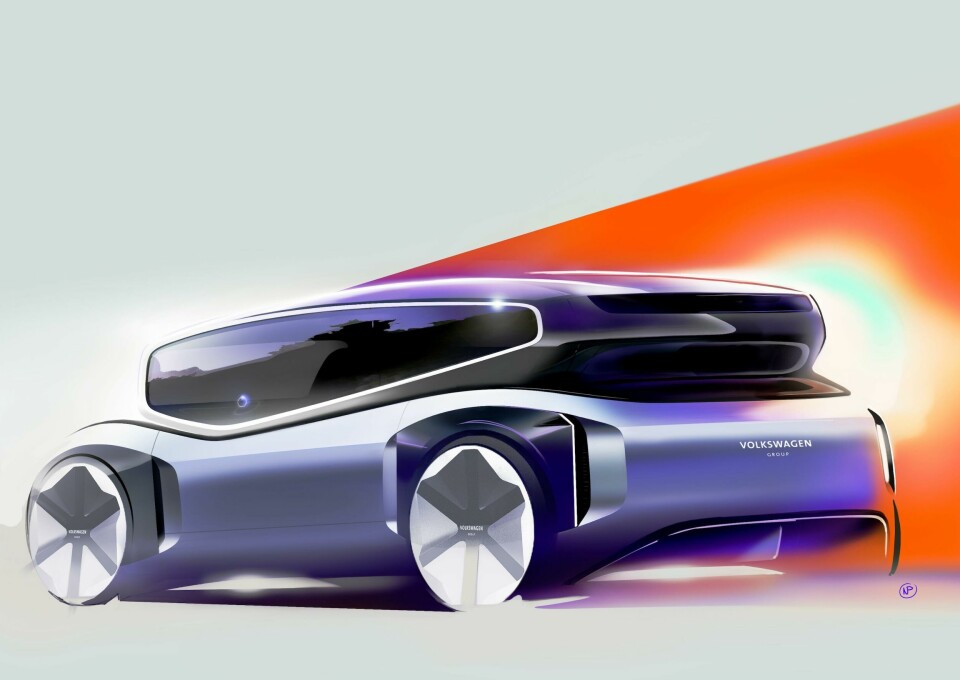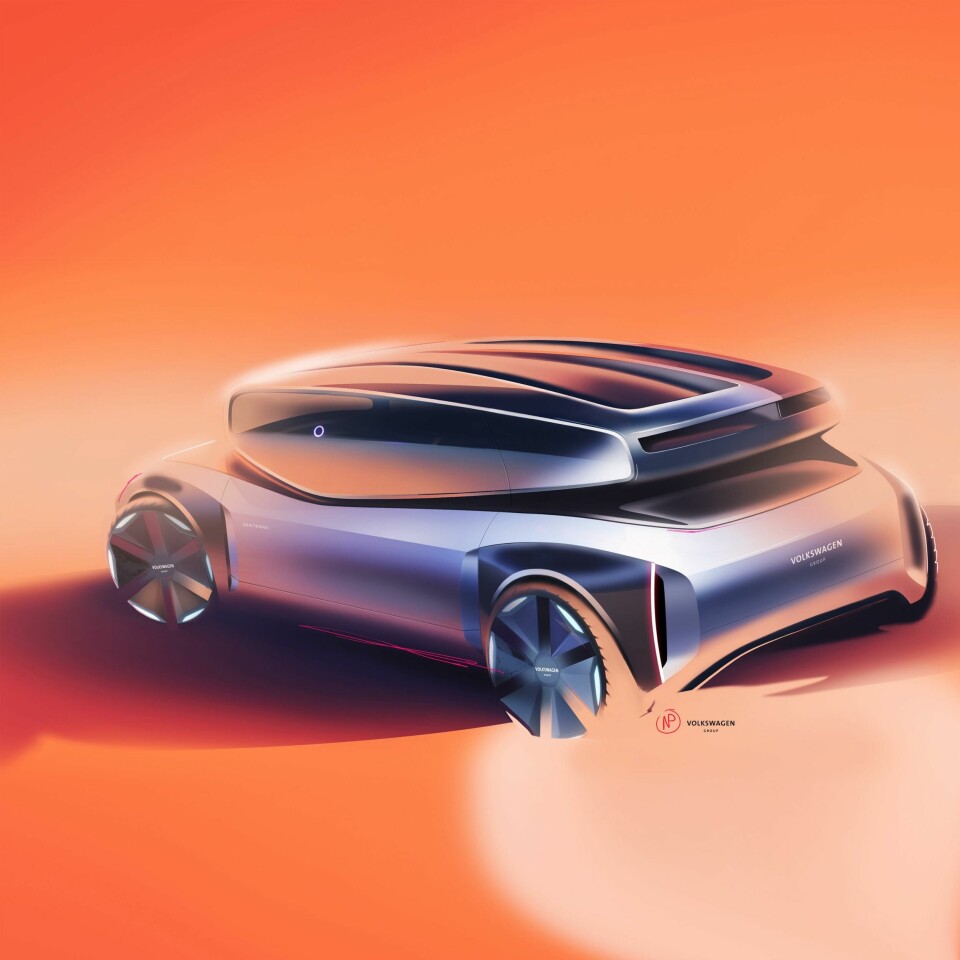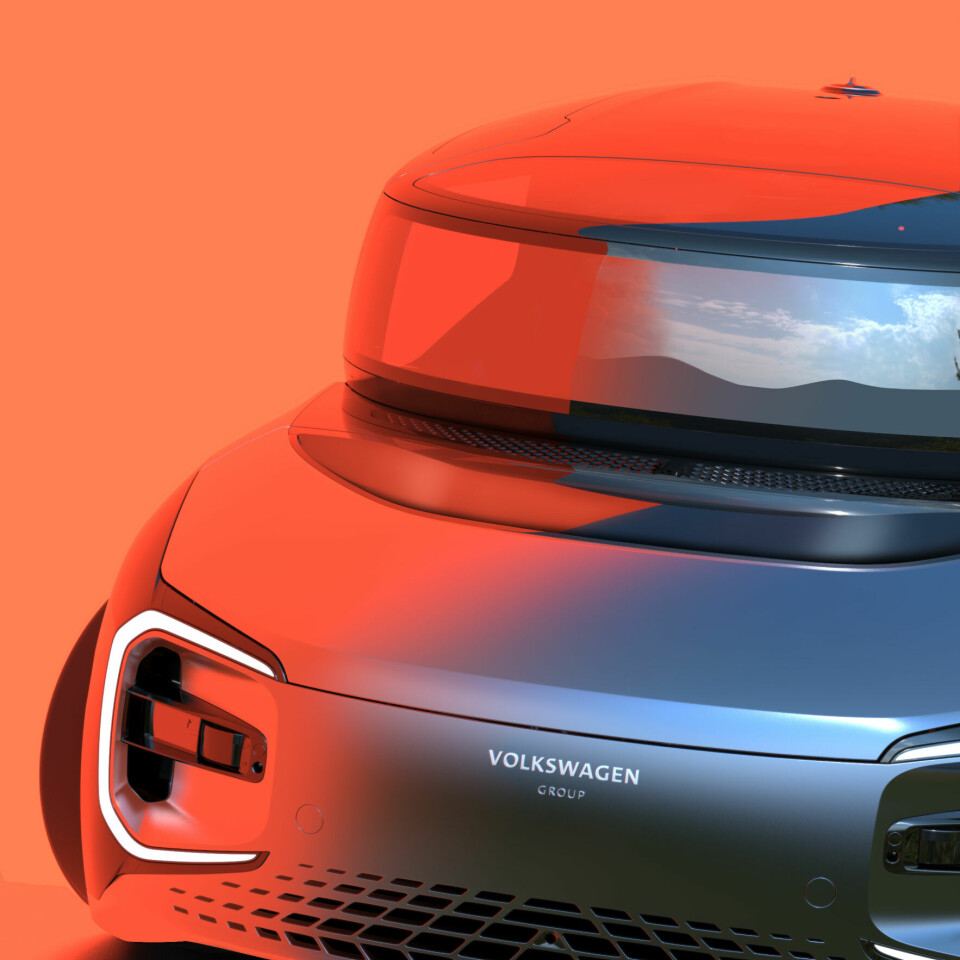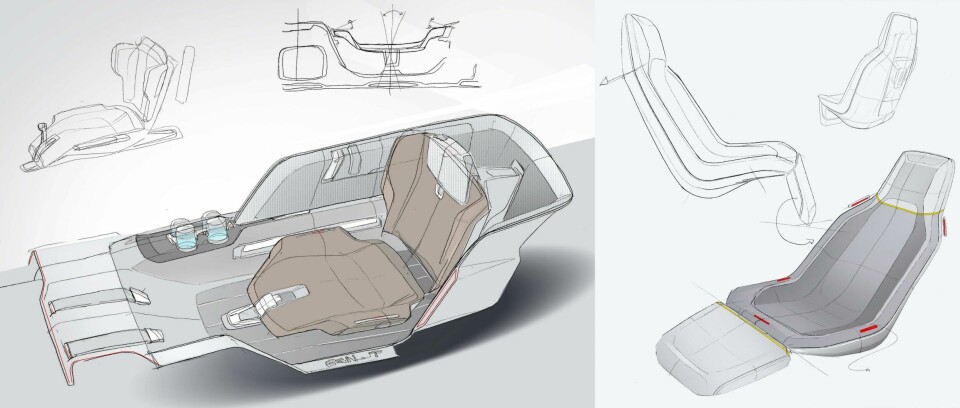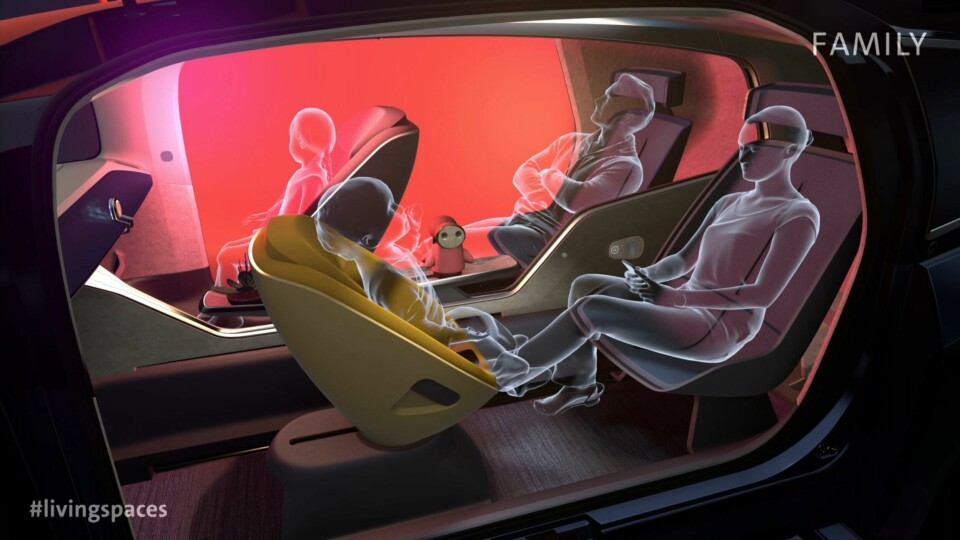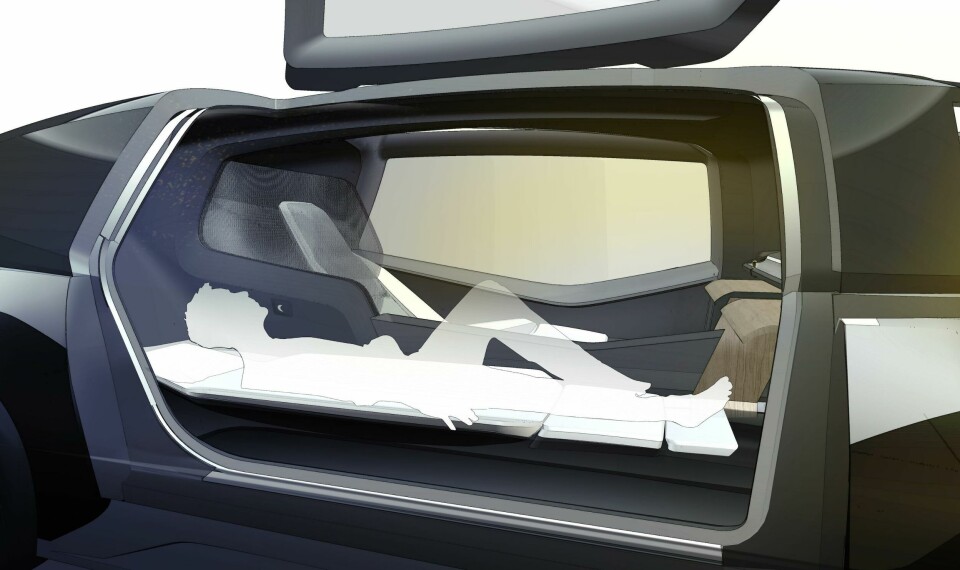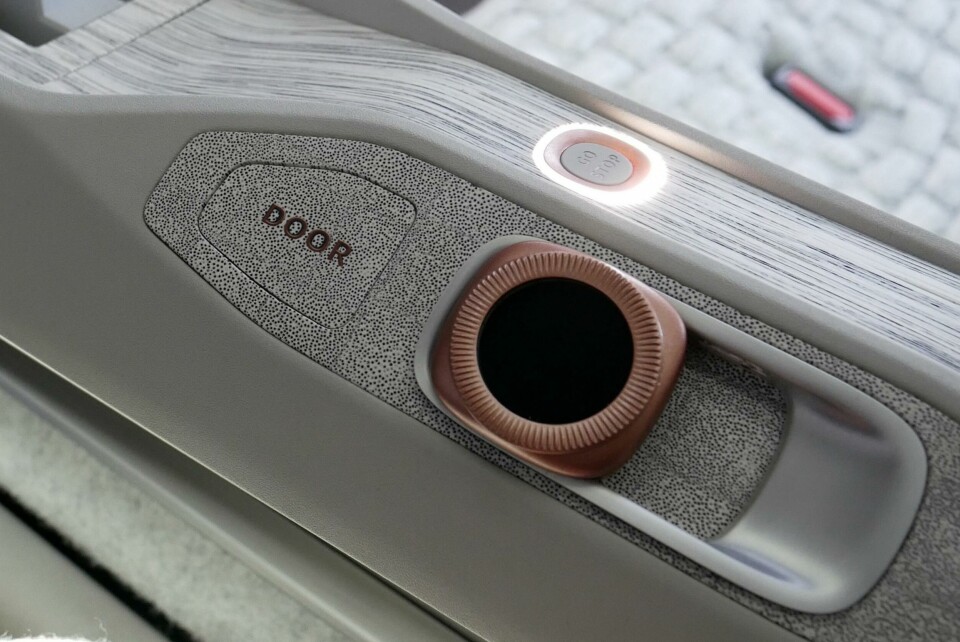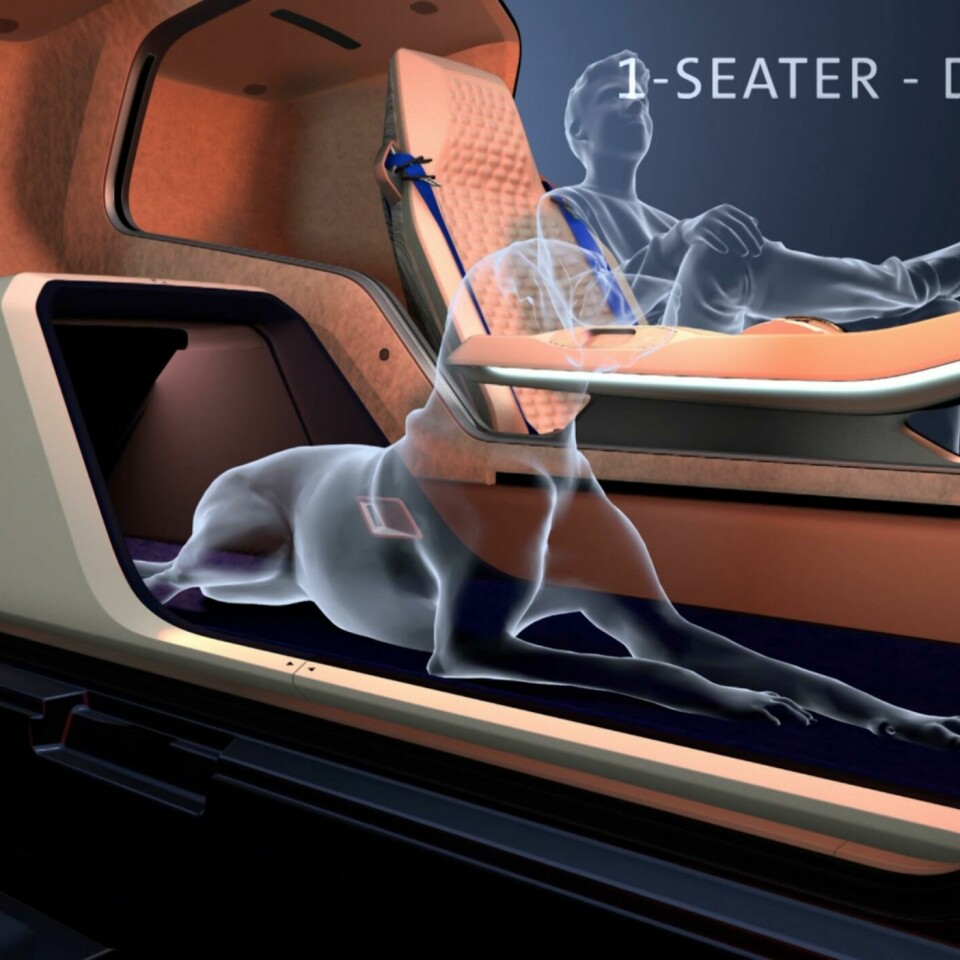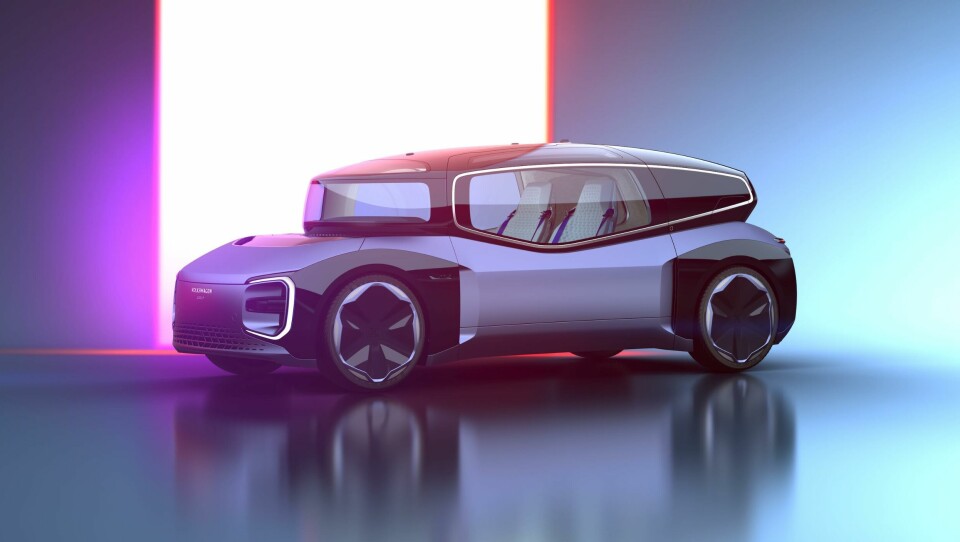
Volkswagen reveals bold autonomous Gen.Travel concept
Volkswagen has weighed in on the future mobility argument with the Gen.Travel – a radical-looking autonomous vehicle with shades of the Rumpler Tropfenwagen. It is aimed at providing a premium alternative to short haul flights and longer train journeys. Klaus Zyciora and Peter Wouda spoke exclusively to Car Design News about the concept
“This is not a designer’s wet dream, this is well-researched and thought through with a lot of innovation,” says Klaus Zyciora. The VW Group design boss is referring to the Gen.Travel concept – an autonomous Level 5 car developed with the Group Future Center arm of the German OEM giant.
The Gen.Travel concept is a vision of what premium travel might look like in 2040: a box of innovation is how Zyciora describes it and one which is intended as a replacement for short, regional flights. “We know that short-distance flying is not a nice experience anymore. This service picks you up at the door and takes you to your destination whether it is a holiday or business reason trip: it is a first class replacement for train and short flights – and it has zero emissions.”
According to Zyciora the Gen.Travel has a range of 700 kilometres. “We are working with QuantumScape (of which VW owns a considerable stake) on battery technology and they have already made huge leaps forward in terms of longer ranges and lower weights,” he says.
The Gen.Travel’s plausibility stays true to VW’s DNA – form wise it’s a different matter altogether
It is an unusually bold move for this most pragmatic of car brands. In an era where the future seems up for grabs, we have become used to seeing ever more outlandish approximations as to where the car is headed. Often these concepts are destined to remain digital designs and, to that end, resemble video games. And while the industry is not short of thought experiments, they don’t often emerge from Wolfsburg.
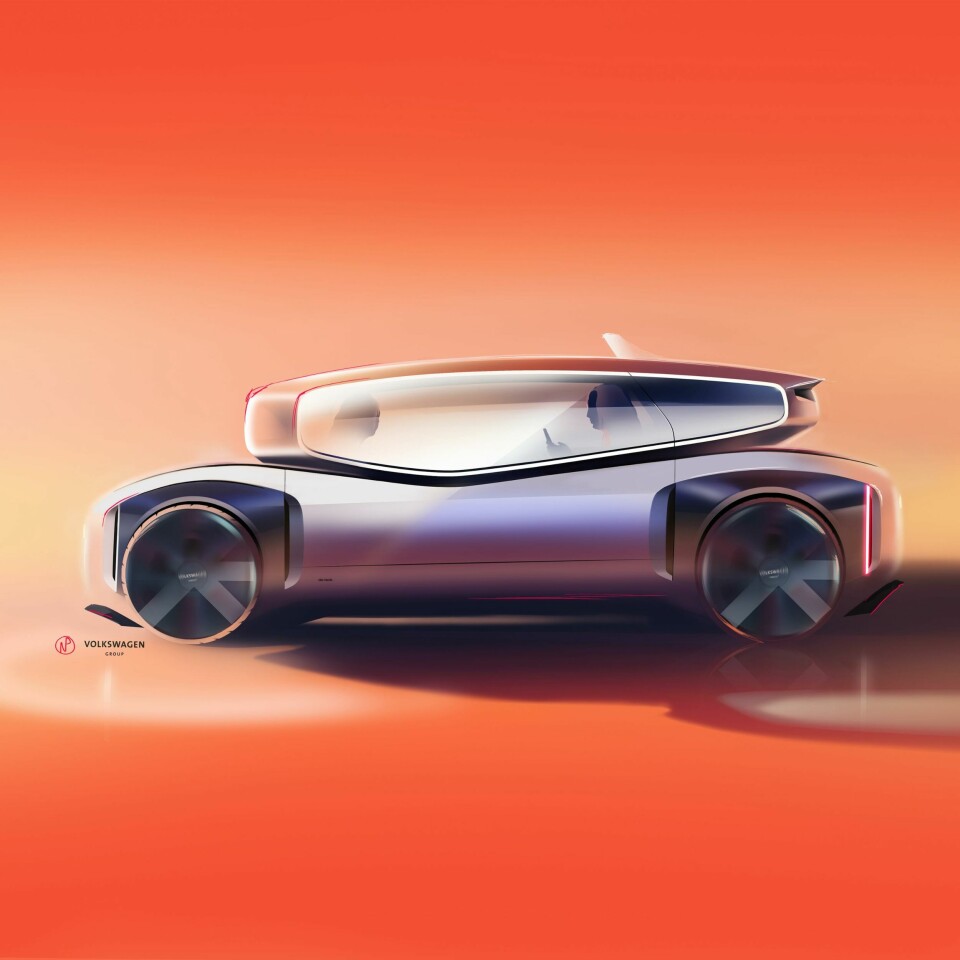
The Gen.Travel is, as Zyciora points out, far from a mere intellectual exercise. For a start, it works – the vehicle underwent rigorous testing at the VW’s test track, which involved designer Peter Wouda, design director at Volkswagen Group Future Centre, sleeping in it as the vehicle cruised, driverless, around the track. In that regard, its plausibility stays true to VW’s DNA. Form wise, well that’s a different matter altogether.
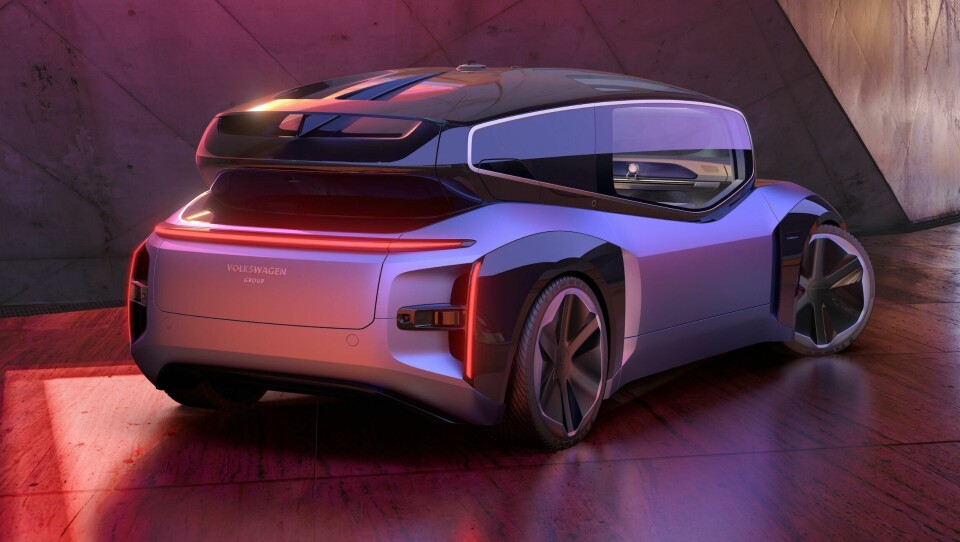
The most striking element is the curved panoramic glass house moulded into a lower section with a mix of glossy black and matte surfaces. At the front, a pair of thin C-shaped headlamps frame air vents while a black section in the lower mask is chock-full of sensors. The snub-nosed hood curves steadily to create a gently undulating shoulder line that drops to allow reclining passengers a good view before rising steeply to minimise the glazing at the rear of the vehicle.
The glasshouse cuts back at the rear with a razor-thin light bar stretching from side-to-side flanked by a pair of vertical slashes of light.
The overall effect recalls a piece of product design rather than automotive design, but while the black mirror surfaces may nod to iPhone screens, the inspiration, says Zyciora, for the Gen.Travel is tapped from the oft-forgotten Rumpler Tropfenwagen, which first appeared at the 1921 Berlin Auto show. VW has a long association with the car, having tested it in their wind tunnel way back in 1979 and the resemblance is striking.

“The Tropfenwagen had a remarkable drag co-efficient, which wasn’t matched for 60 years. It had a fully-upright windshield shaped like a teardrop – this kind of architecture is only possible with autonomous cars,” says Zyciora. “We managed to have really good aerodynamics while creating this room-type space on the inside,” says Wouda. “The panoramic glass makes it feel like you are in a theatre or on a yacht.”
“The panoramic glass makes it feel like you are in a theatre or on a yacht”
The most spectacular feature is the expansive gullwing doors, which dispense with the B-pillar to create a cavernous aperture. Sliding doors of the sort you might find on a bus were deemed practical but did not have the necessary wow factor. “We needed to create a premium experience: this car picks you up at your front door and the gullwing acts like an umbrella,” says Wouda.
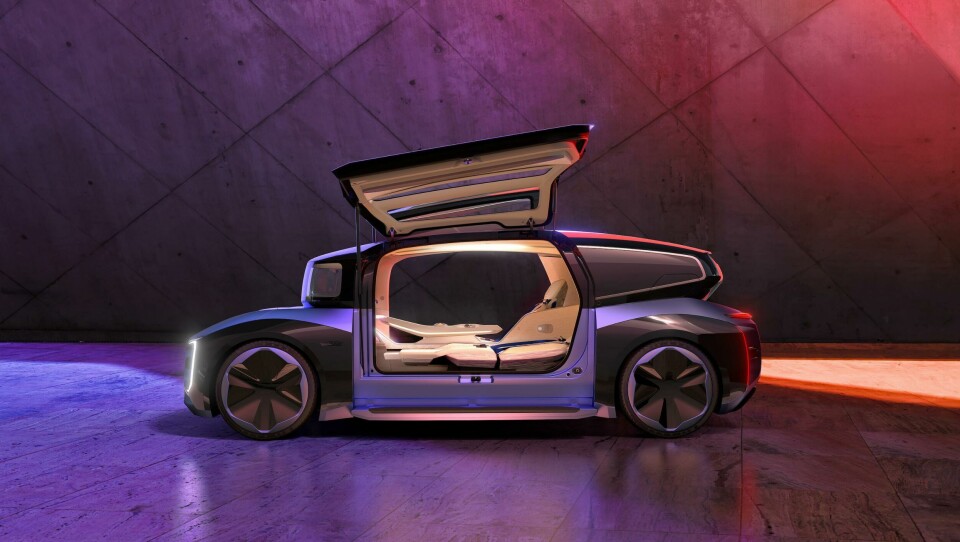
Inside is notable not only for its lack of steering wheel and pedals, but the absence of an IP altogether. “There is no big upright or big horizontal panoramic touch display or that kind of stuff. It is almost a digital detox – a room with high class materials where you feel really comfortable.” says Wouda. “In the middle console are augmented reality glasses for information about your trip, communication or entertainment.”
“I tested it and for the first couple of minutes it is quite weird: no steering wheel, no pedals. If you trust the system and relax it is so easy to fall asleep”
Also in the centre console is a rotary dial and slider with which you can control the main functions like volume, seat position, a button to open the door and one to remove the table. In place of the IP is a digital assistant that moves from left to right to track the progress of the journey – a simple timepiece that feels like the Apple booting-up bar. It is minimalist, but not cold thanks to judicious use of recycled materials in warm hues: felt and karuun – a type of rattan – and the seat covers are 3D knitted.
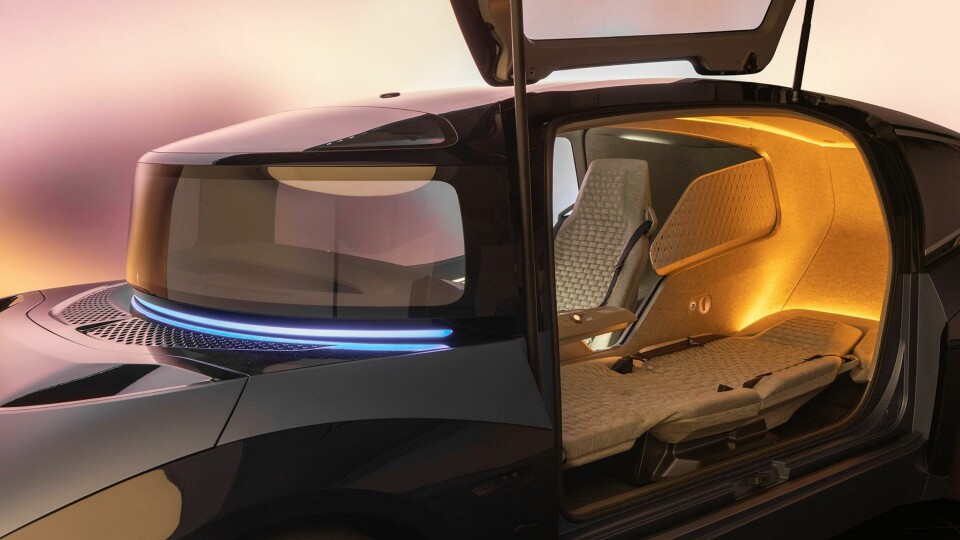
Lighting plays a key role in the interior, which is configurable in three modes: overnight, business, family. Overnight mode features a two-seat configuration that fold flat to form 2-metre-long beds with seatbelts and airbags integrated into the duvets. A room divider emerges to create a cocoon-like private space.
“I tested it and for the first couple of minutes it is quite weird: no steering wheel, no pedals. If you trust the system and relax it is so easy to fall asleep,” says Wouda. The lighting is tuned to influence melatonin production to help passengers to fall asleep and wake up naturally.
Business mode is a 4-seat vis-a-vis configuration with a large table in the middle with lighting used to alleviate the chance of getting motion sickness. Although details are thin on how that works at the moment.
“We could have done something that is easier on the eye. But we aimed for something that is unusual and unseen to break the mould and to polarise to a certain degree”
Family mode places children in the front seats where they can use augmented reality to zone out playing video games, affording parents get a break from the relentlessness of “are we there yet?”
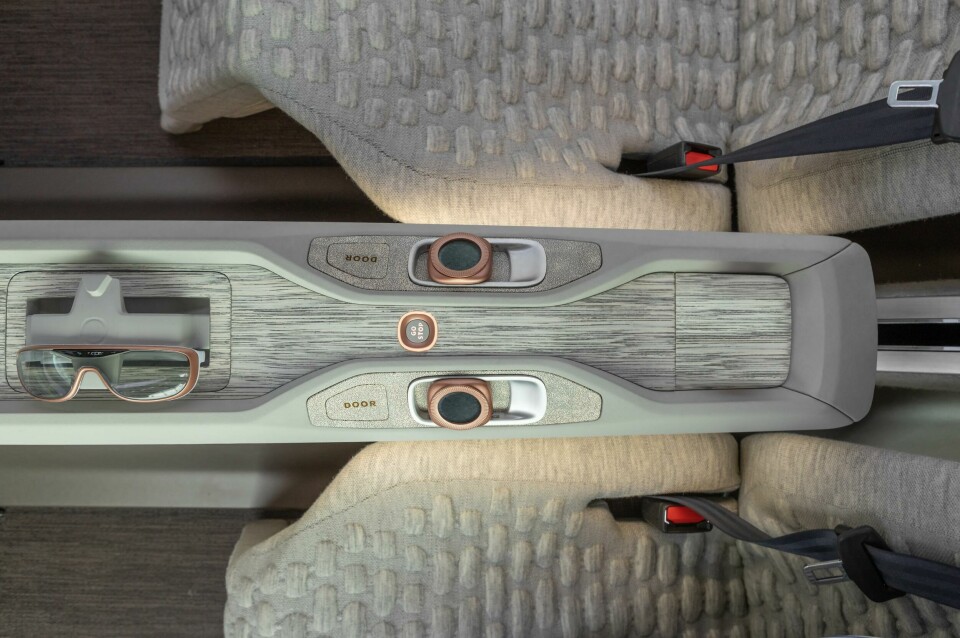
Particular attention was paid to the acoustics: “We experimented with creating an unconscious level of sound that overlays unnecessary noises like a carpet. It is a super-quiet environment,” says Wouda. Among the ideas that are as yet untested is the platoon mode where multiple Gen.Travel vehicles headed in the same direction will form a convoy. “With AI and sensors you could have cars about 1-1.5 metres apart. You can save a tremendous amount of energy and it would be quieter.”
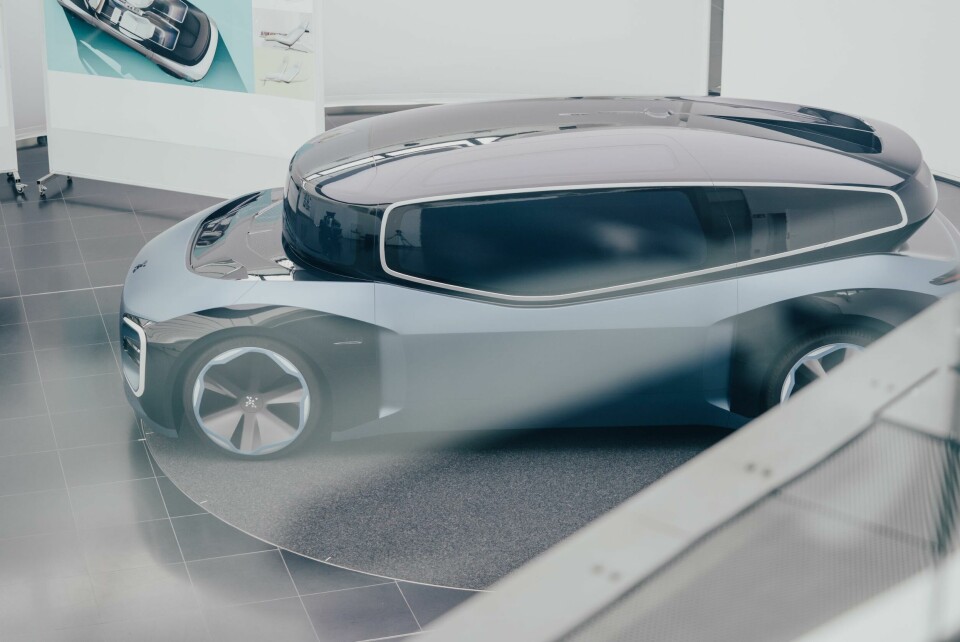
Of course, we are not there yet. Neither does the Gen.Travel have any luggage space outside of the cabin. The intention is to have a frunk and trunk, but as Zyciora admits, this is a working prototype. “There are a lot of calculators and computers where the frunk should be,” he says. “We are sure this will be reduced to a minimum because all that computing can happen in the cloud rather than having thousands of devices driving around with the car.”
“We easily could have done something that is easier on the eye. But we aimed for something that is unusual and unseen to break the mould and to polarise to a certain degree,” Zyciora affirms, “to make our board members think about whether we continue to build the same thing again and again. Or is there room for new territories and a new shape for a new time.”
